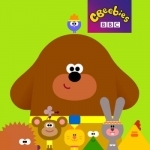
Build With Grandpa
Education and Games
App
Demolish an old building with a wrecking ball, clear the lot with a bulldozer - then design, build,...

Green Screen by Do Ink
Education and Photo & Video
App
The #1 Green Screen app for the iPad in Education, now available for the iPhone too! Green Screen by...

Golf Coach by Dr Noel Rousseau for iPad
Sports and Education
App
Golf Coach is a ground breaking golf instruction app. Winner of both UK and US App Design Awards...

TargetScan - Pistol & Rifle Target Scoring
Sports and Utilities
App
Scan. Analyse. Improve. TargetScan is a specifically designed application for scoring your cards....

Hey Duggee: We Love Animals
Games and Education
App
**** As seen on Nick Jr. **** Duggee's back and this time he's awarding the We Love Animals Badge....

ELSA Speak - Accent Reduction
Education and Games
App
Learn to speak English doesn’t have to be scary and lonely anymore. With ELSA - your English...

Grandpa's Toy Shop
Education and Games
App
Design, build, and decorate ten different kinds of toys to sell in Grandpa's Toy Shop! After you use...

Track Your GPS GSM GPRS Tracker
Navigation and Travel
App
An effective interface allowing you to Manage, Monitor & Locate your compatible GPS GSM GPRS...

Penalty Soccer
Sports and Games
App
★★★★★ Follow us on Twitter for the latest news! http://twitter.com/bakumens...

Music Theory and Practice by Musicopoulos
Education and Music
App
Combining structured music theory lessons with matching exercises is what sets Music Theory and...